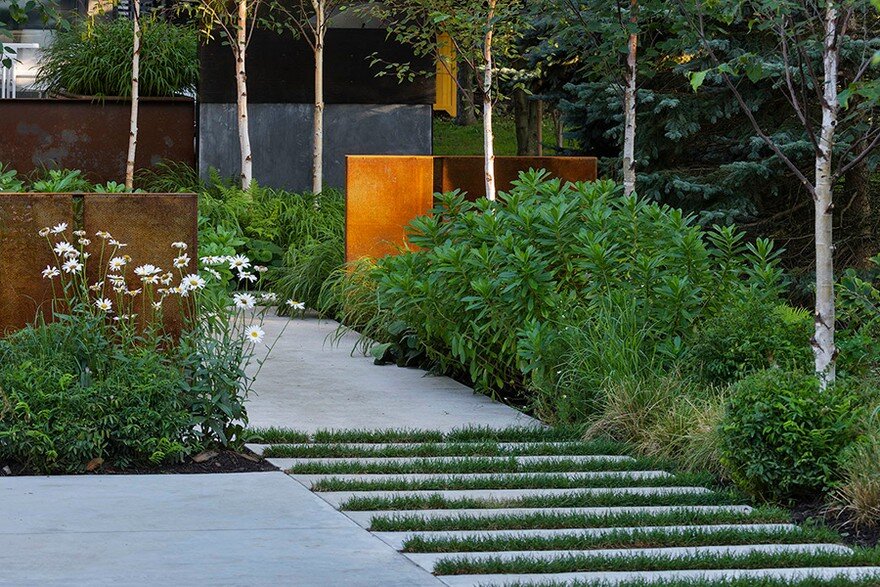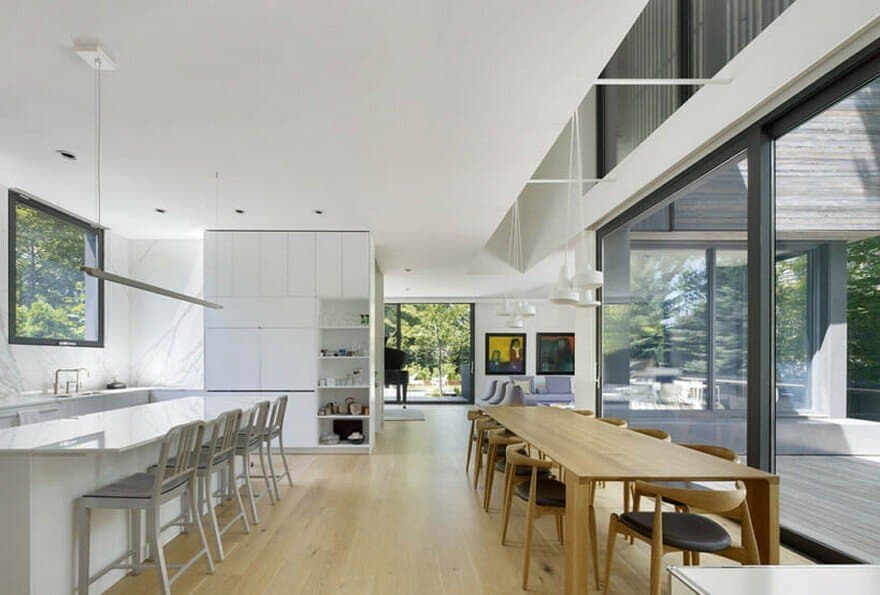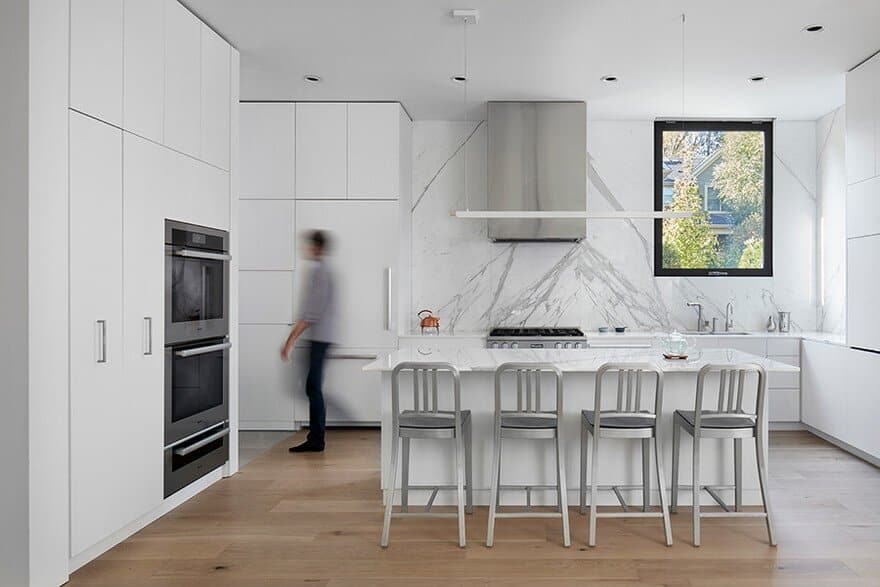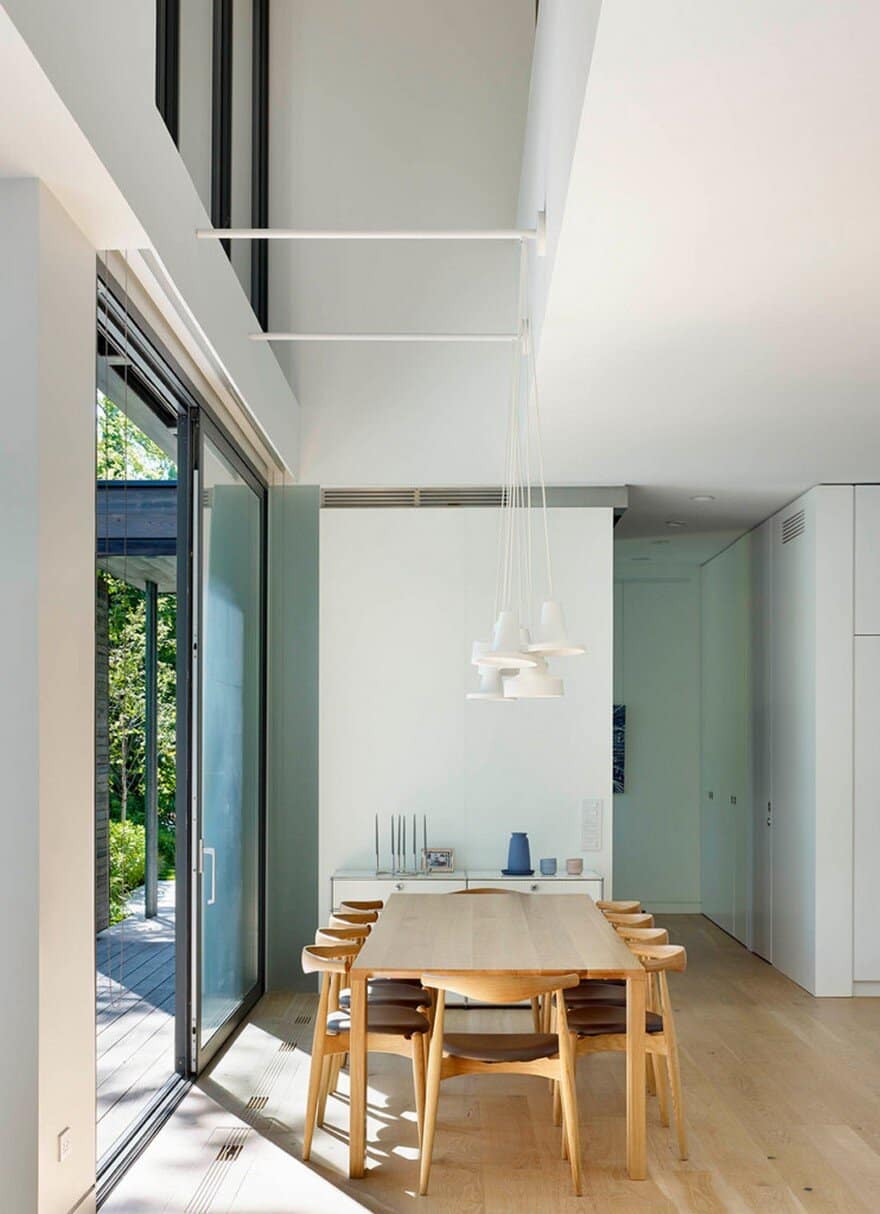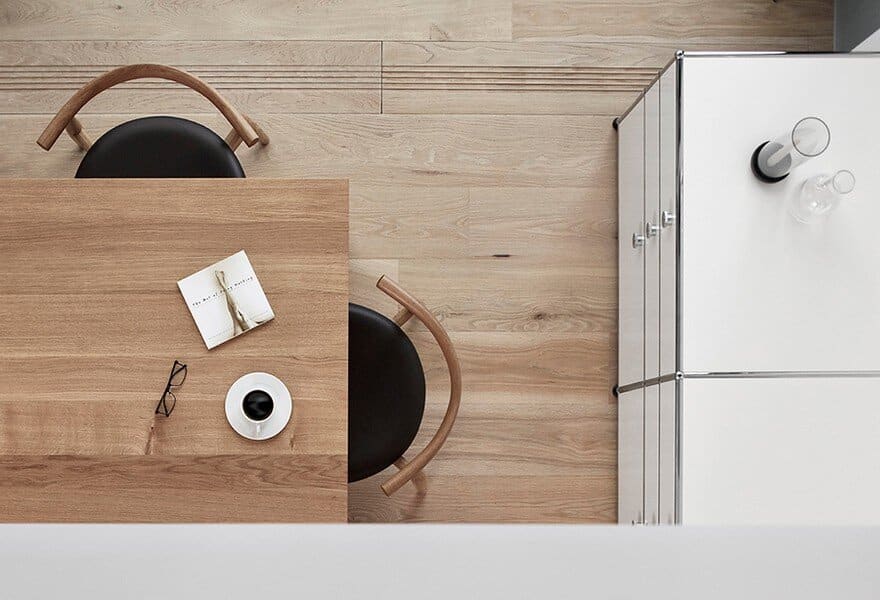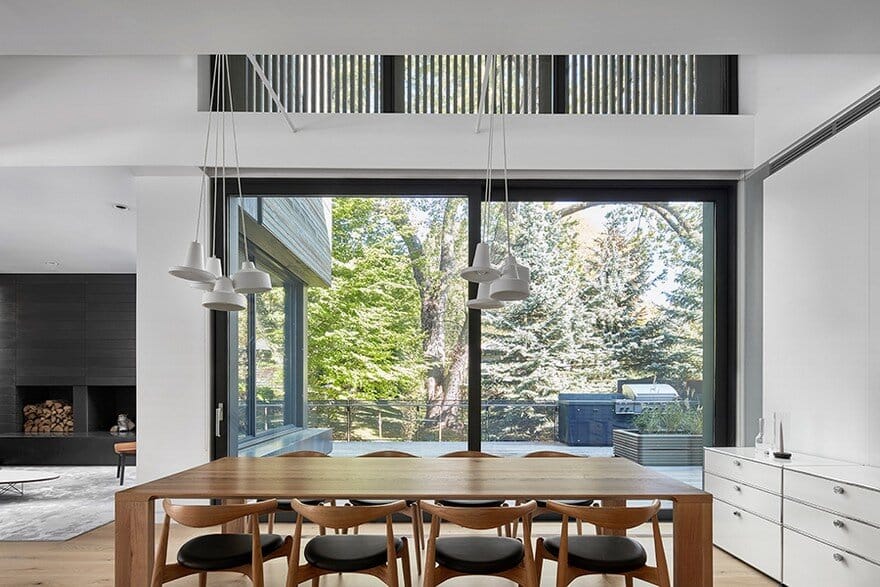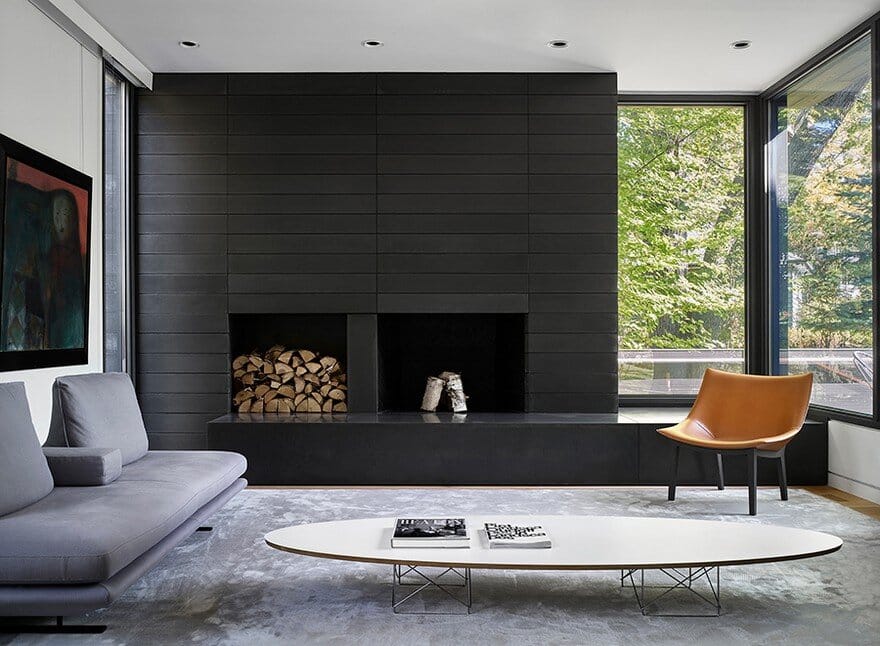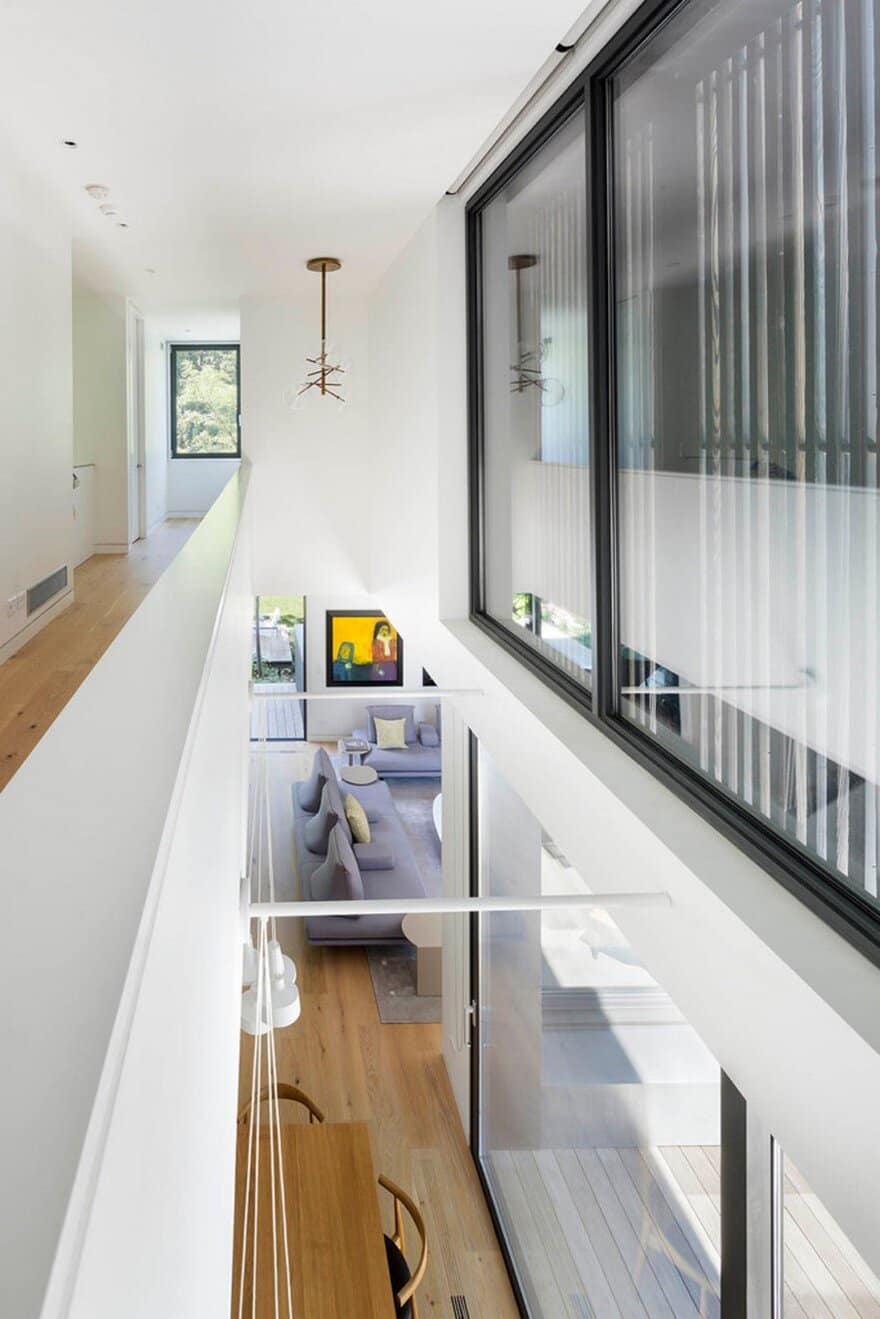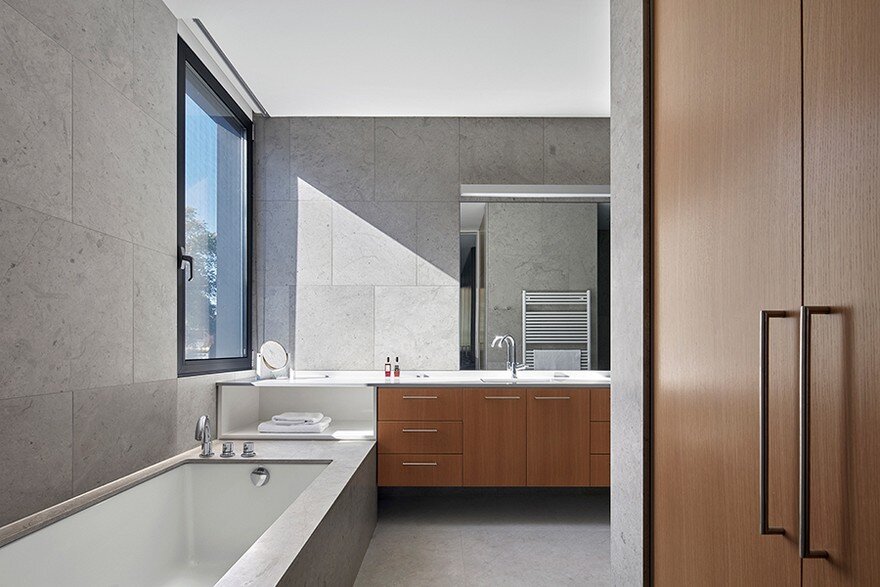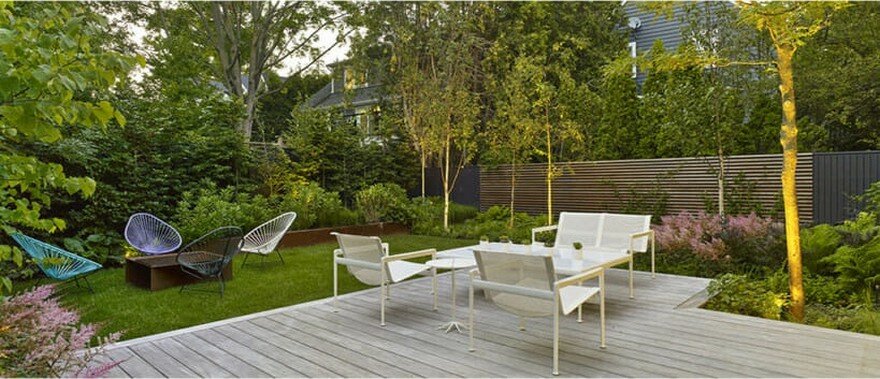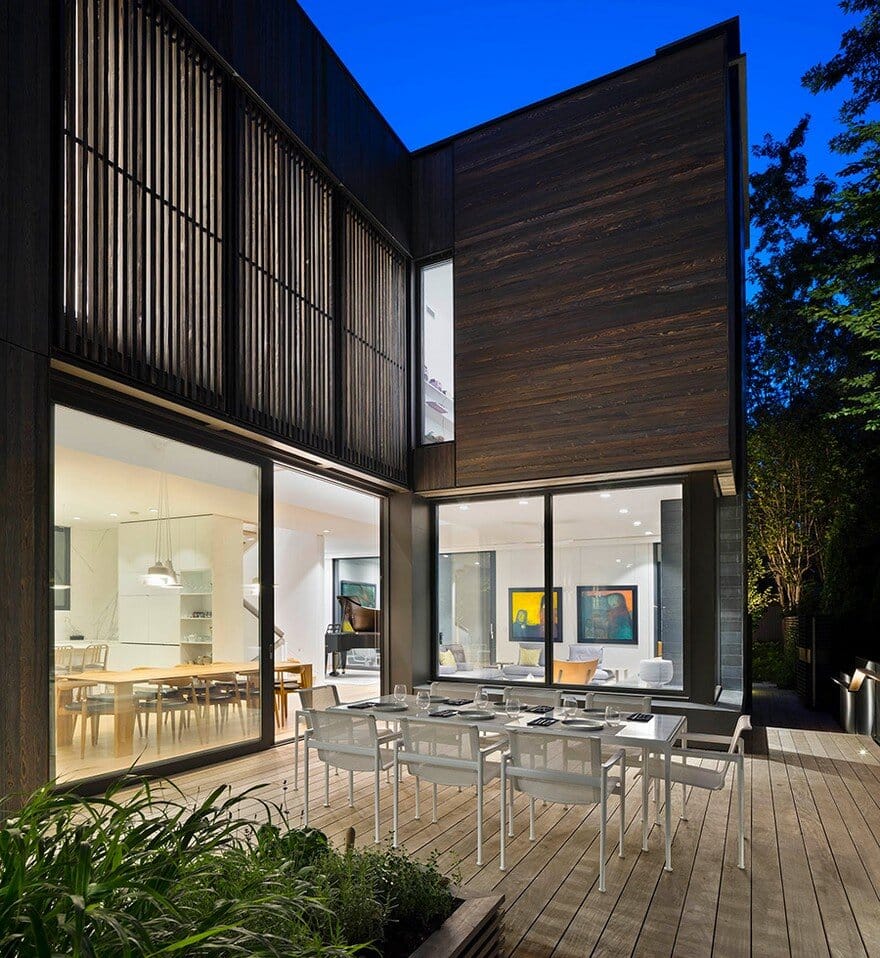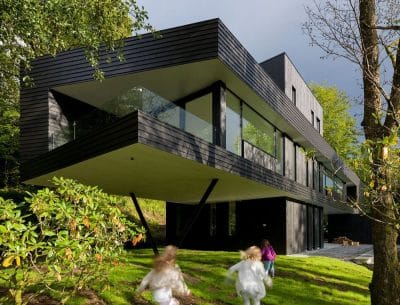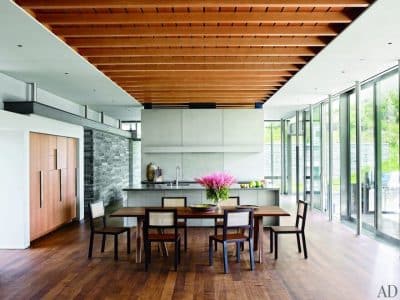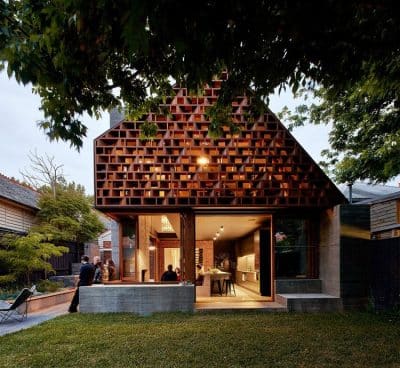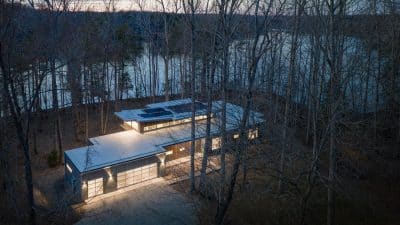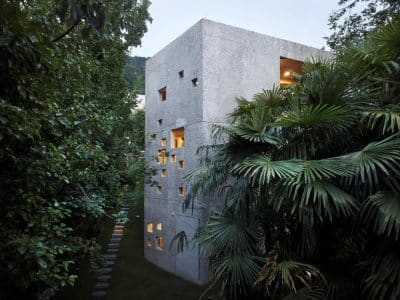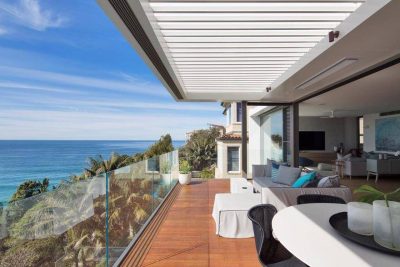Project: Charred Wood–Clad House
Architects: Superkül
Location: Oakville, Ontario, Canada
Year: 2018
Photography: Shai Gil / Tom Arban
Located in the community of Oakville, this new home for a family of five nestles into its lot, inviting in the startling lushness of the neighbouring property through an amply fenestrated east elevation. The two-storey, five-bedroom house is efficiently designed to maximize opportunities for natural light, engaging site and landscape through the provision of a generous courtyard and two outdoor decks.
Respecting the footprint of the previous house, the home’s setback accommodates an underground water course and meets stringent requirements relating to municipal stormwater management. A uniform cladding strategy of charred wood communicates an understated presence that interferes minimally with the landscape; its colour and pronounced grain convey a texture and variegated quality that reflects the densely treed property.
On the interior, a restrained material palette comprises white oak floors and millwork, white walls, brushed stainless steel handrails, and custom concrete panels in a deep charcoal that wrap the generously scaled fireplace. The kitchen features white lacquered millwork alongside dramatically grey-veined white marble countertops and backsplash.
Natural light is introduced throughout the home in a plethora of ways. A double-height atrium rises above the dining room, and the adjacent window wall encourages light to flood both first and second floors. Even the basement is treated as a light-filled garden suite through the provision of a sunken walk-out patio off the guest bedroom next to an outdoor shower, and a deep light well suffuses the subterranean rec room with ample daylight.
The fluidity between interior and exterior space is enhanced by the open plan and the continuity between the kitchen and dining areas and the outdoor courtyard deck. Off the living room, an additional deck faces the beautifully landscaped backyard, promoting an even more active engagement with the natural attributes of the site. It is in these discrete zones of activity that the theme of discovery is most clearly manifest in this project, encouraging a continual exploration of home and site through a multiplicity of means.


